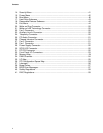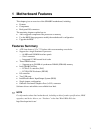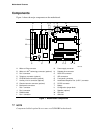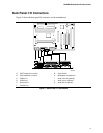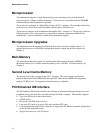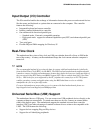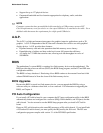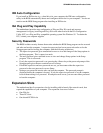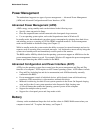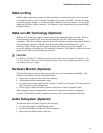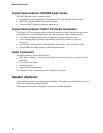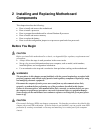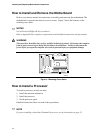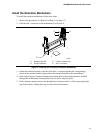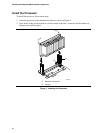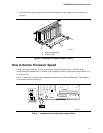
Motherboard Features
14
Power Management
The motherboard supports two types of power management — Advanced Power Management
(APM) and Advanced Configuration and Power Interface (ACPI).
Advanced Power Management (APM)
APM’s energy saving standby mode can be initiated in the following ways:
• Specify a time-out period in Setup
• Press the suspend/resume switch connected to the front panel sleep connector
• Use an operating system option, such as the Suspend menu item in Windows 95
In standby mode, the motherboard can reduce power consumption by spinning down hard drives,
and reducing power to or turning off VESA
†
DPMS-compliant monitors. Power-management
mode can be enabled or disabled in Setup (see Chapter 3).
While in standby mode, the system retains the ability to respond to external interrupts and service
requests, such as incoming faxes or network messages. Any keyboard or mouse activity brings the
system out of standby mode and immediately restores power to the monitor.
The BIOS enables APM by default; but the operating system must support an APM driver for the
power-management features to work. For example, Windows 95 supports the power-management
features upon detecting that APM is enabled in the BIOS.
Advanced Configuration and Power Interface (ACPI)
ACPI gives the operating system direct control over the power management and Plug and Play
functions of a computer. ACPI requires an ACPI-aware operating system. ACPI features include:
• Plug and Play (including bus and device enumeration) and APM functionality normally
contained in the BIOS
• Power management control of individual devices, add-in boards (some add-in boards may
require an ACPI-aware driver), video monitor, and hard disk drives
• Methods for achieving less than 30-watt system operation in the Power On Suspend sleeping
state, and less than 5-watt system operation in the Suspend to Disk sleeping state
• A Soft-off feature that enables the operating system to power off the computer
• Support for multiple wake up events
• Support for a front panel power and sleep mode switch
Battery
A battery on the motherboard keeps the clock and the values in CMOS RAM current when your
computer is turned off. To replace the battery, see Chapter 2.



